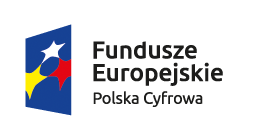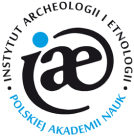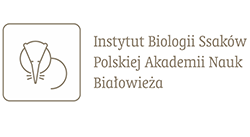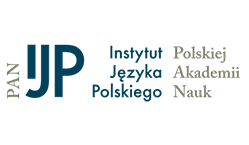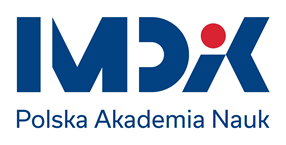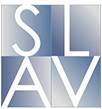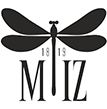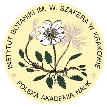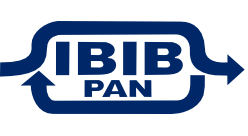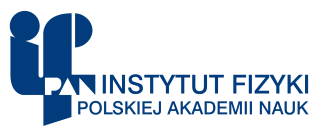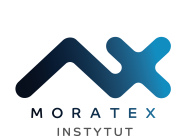- Wyszukaj w całym Repozytorium
- Piśmiennictwo i mapy
- Archeologia
- Baza Młynów
- Nauki przyrodnicze
Wyszukiwanie zaawansowane
Wyszukiwanie zaawansowane
Wyszukiwanie zaawansowane
Wyszukiwanie zaawansowane
Wyszukiwanie zaawansowane

Obiekt
Tytuł: Rozwojowo-zależna indukcja biogenezy mitochondriów podczas różnicowania neuralnego ludzkich indukowanych pluripotencajalnych komórek macierzystych (hiPSC)
Współtwórca:
Bużańska, Leonora ( Promotor)
Wydawca:
Instytut Medycyny Doswiadczalnej i Klinicznej im. M. Mossakowskiego PAN
Miejsce wydania:
Opis:
Biblliografia zawiera 40 pozycji. ; 95 s.: il., wykr.tabl., fotogr. ; 30 cm.
Uzyskany tytuł:
Stopień studiów:
Dyscyplina :
Instytucja nadająca tytuł:
Mossakowski Medical Research Center PAS
Abstrakt:
Human induced pluripotent stem cells (hiPSC) generated from somatic cells through genetic reprogramming influenced greatly development of basic research in regenerative medicine as well as in vitro toxicology and pharmacology field. The progress in the “safemethods” of hiPSC generation (without the integration of the transgene into the host genome, eg., mRNA, recombinant proteins, miRNA’s, episomal vectors) gave an opportunity to use this cells in personalized cell therapy. In addition, the hiPSC serve as ethically non-controversial in vitro model of early human development which is an alternative to the model of human embryonic stem cells (hESC). The cycle of publications chosen for the theses investigates the influence of stimulation of mitochondrial biogenesis on the early stages of hiPSC neural differentiation. In this study, neural differentiation of hiPSC resulted in obtaining three distinct cells populations: neural stem cells (NSC), early neural progenitors (eNP), and neural progenitors (NP) however, the population of eNP cells has been characterized for the first time. Analysis of the gene and protein expression have shown that NSC, eNP and NP cell populations were significantly different in the level of unique markers for early neural development. The obtained cell populations were investigated for their sensitivity to compounds stimulating the mitochondrial biogenesis: Pyrroloquinoline quinone (PQQ) or idebenone (IDB), which were added independently. The results revealed significant changes in the cells viability, free radical level (ROS) and mitochondrial membrane potential (ΔΨm) upon the treatment with PQQ and IDB in all tested populations. The expression of genes related with mitochondrial biogenesis regulation: NRF1, PPARGC1A andTFAM were also significantly different. However exclusively at the eNP stage, after incubation with PQQ and IDB, all markers indicating stimulation of mitochondrial biogenesis were significantly elevated.This included upregulation of NRF1, PPARGC1A, TFAM gene expression, increased number of copies of mitochondrial DNA (mtDNA) and significant elevation of expression of proteinsimportant for mitochondrial function: COX-1 and SDHA. Gene expression analysis of neural differentiation upon PQQ treatment revealed in NSC and eNP stages of developmentsimultaneous increase in expression of PPARGC1A (main regulator of mitochondrial biogenesis) and astrocyte marker GFAPaccompanied with repression of the neuronal marker MAP2. IDB in all stages of development yielded a similar effect with the exception of eNP, where stimulation of theexpression of both GFAP and MAP2was observed, although the increase in GFAP expression was higher. The above data demonstrate the existence of developmental “window of sensitivity" for investigated factors (PQQ, IDB) inducing mitochondrial biogenesis at eNP stage of development and the possibility of influencing of the neural differentiation pathways via PQQ and IDB in favour of astrocytic fate.
Szczegółowy typ zasobu:
Identyfikator zasobu:
Źródło:
IMDiK PAN, sygn. ZS401 ; kliknij tutaj, żeby przejść
Język:
Język streszczenia:
Prawa:
Creative Commons Attribution BY 4.0 license
Zasady wykorzystania:
Copyright-protected material. [CC BY 4.0] May be used within the scope specified in Creative Commons Attribution BY 4.0 license, full text available at: ; -
Digitalizacja:
Mossakowski Medical Research Institute PAS
Lokalizacja oryginału:
Library of the Mossakowski Medical Research Institute PAS
Dofinansowane ze środków:
Dostęp:
Kolekcje, do których przypisany jest obiekt:
- Repozytorium Cyfrowe Instytutów Naukowych > Kolekcje Partnerów > Instytut Medycyny Doświadczalnej i Klinicznej PAN > Prace dyplomowe > Prace doktorskie
- Repozytorium Cyfrowe Instytutów Naukowych > Piśmiennictwo > Prace dyplomowe
Data ostatniej modyfikacji:
5 sty 2023
Data dodania obiektu:
30 sty 2020
Liczba pobrań / odtworzeń:
141
Wszystkie dostępne wersje tego obiektu:
https://rcin.org.pl./publication/138917
Wyświetl opis w formacie RDF:
Wyświetl opis w formacie RDFa:
Wyświetl opis w formacie OAI-PMH:
Obiekty Podobne
Mossakowski, Mirosław Jan (1929–2001) Long, D. M. Myers, Ronald E. Rodriguez de Curet, H. Klatzo, Igor

 INSTYTUT ARCHEOLOGII I ETNOLOGII POLSKIEJ AKADEMII NAUK
INSTYTUT ARCHEOLOGII I ETNOLOGII POLSKIEJ AKADEMII NAUK
 INSTYTUT BADAŃ LITERACKICH POLSKIEJ AKADEMII NAUK
INSTYTUT BADAŃ LITERACKICH POLSKIEJ AKADEMII NAUK
 INSTYTUT BADAWCZY LEŚNICTWA
INSTYTUT BADAWCZY LEŚNICTWA
 INSTYTUT BIOLOGII DOŚWIADCZALNEJ IM. MARCELEGO NENCKIEGO POLSKIEJ AKADEMII NAUK
INSTYTUT BIOLOGII DOŚWIADCZALNEJ IM. MARCELEGO NENCKIEGO POLSKIEJ AKADEMII NAUK
 INSTYTUT BIOLOGII SSAKÓW POLSKIEJ AKADEMII NAUK
INSTYTUT BIOLOGII SSAKÓW POLSKIEJ AKADEMII NAUK
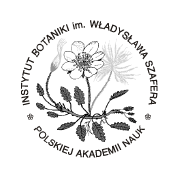 INSTYTUT CHEMII FIZYCZNEJ PAN
INSTYTUT CHEMII FIZYCZNEJ PAN
 INSTYTUT CHEMII ORGANICZNEJ PAN
INSTYTUT CHEMII ORGANICZNEJ PAN
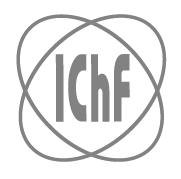 INSTYTUT FILOZOFII I SOCJOLOGII PAN
INSTYTUT FILOZOFII I SOCJOLOGII PAN
 INSTYTUT GEOGRAFII I PRZESTRZENNEGO ZAGOSPODAROWANIA PAN
INSTYTUT GEOGRAFII I PRZESTRZENNEGO ZAGOSPODAROWANIA PAN
 INSTYTUT HISTORII im. TADEUSZA MANTEUFFLA POLSKIEJ AKADEMII NAUK
INSTYTUT HISTORII im. TADEUSZA MANTEUFFLA POLSKIEJ AKADEMII NAUK
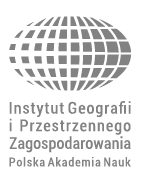 INSTYTUT JĘZYKA POLSKIEGO POLSKIEJ AKADEMII NAUK
INSTYTUT JĘZYKA POLSKIEGO POLSKIEJ AKADEMII NAUK
 INSTYTUT MATEMATYCZNY PAN
INSTYTUT MATEMATYCZNY PAN
 INSTYTUT MEDYCYNY DOŚWIADCZALNEJ I KLINICZNEJ IM.MIROSŁAWA MOSSAKOWSKIEGO POLSKIEJ AKADEMII NAUK
INSTYTUT MEDYCYNY DOŚWIADCZALNEJ I KLINICZNEJ IM.MIROSŁAWA MOSSAKOWSKIEGO POLSKIEJ AKADEMII NAUK
 INSTYTUT PODSTAWOWYCH PROBLEMÓW TECHNIKI PAN
INSTYTUT PODSTAWOWYCH PROBLEMÓW TECHNIKI PAN
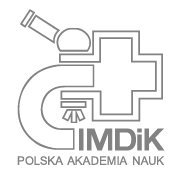 INSTYTUT SLAWISTYKI PAN
INSTYTUT SLAWISTYKI PAN
 SIEĆ BADAWCZA ŁUKASIEWICZ - INSTYTUT TECHNOLOGII MATERIAŁÓW ELEKTRONICZNYCH
SIEĆ BADAWCZA ŁUKASIEWICZ - INSTYTUT TECHNOLOGII MATERIAŁÓW ELEKTRONICZNYCH
 MUZEUM I INSTYTUT ZOOLOGII POLSKIEJ AKADEMII NAUK
MUZEUM I INSTYTUT ZOOLOGII POLSKIEJ AKADEMII NAUK
 INSTYTUT BADAŃ SYSTEMOWYCH PAN
INSTYTUT BADAŃ SYSTEMOWYCH PAN
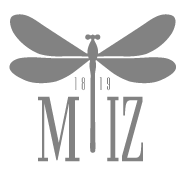 INSTYTUT BOTANIKI IM. WŁADYSŁAWA SZAFERA POLSKIEJ AKADEMII NAUK
INSTYTUT BOTANIKI IM. WŁADYSŁAWA SZAFERA POLSKIEJ AKADEMII NAUK




